Many Sydneysiders thinking of a family fishing holiday often daydream of faraway destinations to the north, south or west. Unfortunately they overlook what’s right on their doorstep, a hidden treasure – the mighty Hawkesbury River.
With its sandstone escarpments, abundant birdlife, great fishing and crabbing and its proximity to Sydney, the Hawkesbury has plenty for your next fishing adventure.
Whether it’s a day trip, a weekend or week-long stay at one of the resorts, on board a houseboat or camping at one of the many van parks, the Hawkesbury has a lot to offer the keen family fisho.
With over 150km of navigable water, the Hawkesbury is as diverse as it is large.
Stretching from the headwaters above Penrith in Sydney’s west, it flows down through the historic township of Windsor, where the famous Bridge to Bridge ski race finishes.
From there it continues on its snake-like path, flanked by sandstone cliffs down to the brackish reaches at Wisemans Ferry. This is a very tourist-friendly township that has some great attractions and accommodation options.
The river widens from Wisemans Ferry and meanders down through the mangrove-lined banks and oyster-encrusted intertidal rocks to Spencer and Brooklyn, home to some huge mulloway and blue-nosed bream.
Let’s explore the fishing options into digestible chunks.
Only an hour’s drive from the CBD is a hidden jewel that most people are unaware of – the Nepean or Devil’s Gorge.
This beautiful piece of water is flanked by towering sandstone cliffs and can turn on some great bass fishing. Spring and Summer are the best times for encountering the local bass after they have made their annual migration back upstream and negotiated the new fish ladder at Penrith Weir.
Launching a kayak, canoe or boat from Tench Reserve (gates open from sunrise to sunset) and heading upstream will lead you into the gorge proper.
Most techniques work well here, with the key factor being accurate casts. There are caves, fallen timber, boulders and weed beds to probe.
Starting early in the morning, casting surface plugs or flies to the prolific structure often yields explosive bass strikes. The towering cliffs shadowing the valley mean the surface bite can last on until mid-morning some days.
Let’s face it, I’d rather warm up catching bass on the surface than wait until the sun is high enough to take the chill from the air!
If the fish aren’t keen on surface lures, my next recommendation would be a handful of spinnerbaits in a variety of colours and sizes. Cast to the same structure and these lures will take fish all day. You can get them into some nasty country where other lures will foul up.
Casting tight to the rock walls, allowing the spinnerbait to ‘helicopter’ down the steep face, is a proven method for targeting big fish sitting deep.
If lure fishing isn’t for you and there are some kids to keep entertained, have a picnic in one of the many bankside parks. You can soak earthworms, bread or corn and expect to encounter bass, European carp, eel-tailed catfish and mullet through the warmer months.
Downstream from Penrith Weir, the river gains a little momentum and is well-suited to canoe and kayak anglers.
This is a great section with long pools interspersed with rapids; there is plenty of fallen timber, weed beds and overhanging vegetation to cast at.
For an effortless trip, most anglers like to use two cars, dropping one off further downstream at Devlins Lane, Yarramundi or North Richmond and picking up the other on the way home. This will allow you to concentrate on fishing and not have to worry about how long it will take you to navigate back through the rapids and current.
Alternatively, you can opt for a shorter trip and launch at one of the aforementioned pick-up points.
Between North Richmond and Windsor are the upper limits of the tidal water. There is a good stretch that is accessible by boat when launching from Windsor’s Governor Phillip Park.
Caution should be taken and you should stick to the 8-knot speed limit because there are quite a few shallow sandbanks and weed beds at low tide.
Bass are the main target here, with the occasional estuary perch. I highly recommend surface lures and spinnerbaits here because it can get quite overgrown with weed late in the season.
There are a few land-based options at Windsor, including the local jetty next to the bridge, the beach on the opposite side of the bridge and the Breakaway towards Freemans Reach.
The main species encountered are bass, estuary perch, mullet, carp and, in the Summer months, the occasional bream and flathead. The best baits are fresh Hawkesbury prawns and earthworms for the bass, bream, flathead and EPs, bread for mullet and corn kernels for the European carp.
This stretch of river is tidal-influenced and can turn on some great fishing through Spring, Summer And Autumn. Bass and EPs are the main species but anglers in the know regularly take good catches of flathead throughout the warm months, plus the occasional bream.
There are several locations to target these species but the main attraction would have to be the towering sandstone cliffs littered with caves and crevices.
Casting hardbodies, soft plastics and spinnerbaits on a falling tide to all the nooks and crannies will put you in with a good chance of bass and EPs.
Other fish-holding structure can be weed beds, tree snags and drop-offs, all of which are quite common in this section.
It’s such a large area and one may be forgiven for not knowing where to start.
The best approach is to single out a piece of water and give it a good work over with your chosen method. If unsuccessful, move a few kilometres up or down and repeat the process.
The structure here is quite accommodating for bass and EPs but what about the flathead? They can be found on the major drop-offs and creek mouths through Spring, Summer and Autumn.
Flathead put up a great fight on light spinning and baitcasting outfits in the warmer water in these reaches and taste great on the barbecue.
The main issue with eating fish from this section is blue-green algae, which is at its worst as the water rises above 25° in a sustained dry spell. Anglers should keep an eye out for clumps of algae on the surface and avoid eating fish from areas of high concentration.
Access to the water is quite limited here due to private property. Most fishing has to be done from a boat, canoe or kayak, although the skiers and wakeboarders tend to make conditions a little scary through Summer.
The best public ramp is Governor Phillip Park at Windsor, with the alternative being Skeleton Rocks Reserve at Lower Portland. This old punt landing ramp is quite dilapidated and has a severe drop-off at the bottom.
There are also plenty of ski/caravan parks dotted along this section and use of their launching facilities usually incurs a fee of around $10.
Lower Portland is where the World Heritage-listed Colo River meets the Hawkesbury. The Colo is a 4-knot zone and many anglers seek refuge up there from the onslaught of skiers and wakeboarders.
There is some beautiful scenery as well as some decent fishing to be had but accurate casting is a must if you’re after bass.
Back in the Hawkesbury, just a few hundred metres downstream from the public boat ramp at Skeleton Rocks Reserve is a large reef complex known as The Skeletons. This is the largest reef upstream of Brooklyn and can hold decent concentrations of fish, including school mulloway at times.
The main species encountered are Bass, EPs, bream and flathead. Live or fresh Hawkesbury prawns are quite productive, as is casting soft plastics and trolling hardbodies.
Anglers should use a quality depth sounder to mark out the edges of reef and focus their efforts accordingly.
From here the river widens a bit more and flows down to Upper Half Moon Bend, where there is some undulating bottom that is home to some decent bream and flathead in the warmer months.
To avoid boat traffic, try to anchor on the inside of the red marker (let’s hope it’s restored after going missing in the last flood).
Cliftonville is the next corner and is where there are usually a handful of trawlers working on weekdays. The rubbly rock walls in this area are great places to fish for bream in Spring when they are moving upstream with the school prawns.
Lightly weighted live prawns, black crabs or small hard and soft lures are the most successful approaches here.
Dads Corner is the next sweeping bend and is well-known locally for great bags of flathead, bream, soapy and school jewies.
Most methods work well here with the local prawns standout bait.
From here down to Wisemans Ferry can get quite busy with boat traffic in Summer. Fishos will do best and working the edges thoroughly with lures where bream will be looking for an easy meal that maybe dislodged from the constant waves pounding against the banks.
Just upstream of the Webbs Creek ferry is Webbs Creek itself, a mid-sized watercourse that can produce some great fishing in the Summer.
Although not known for producing trophy fish, Webbs can turn up decent numbers of bream, bass, EPs and flathead around its abundant structure. There is the odd soapy jew in the deeper holes.
The mouth of this creek has a pronounced deep hole and is a good proposition for a jewie.
Wisemans Ferry is a quaint little tourist town with some great attractions and accommodation options which include houseboats, B&Bs and resorts.
For non-fishers there are a couple of nice cafes, restaurants, art galleries and knick-knack stores. If you’re feeling adventurous, there is the Great North Walk on the northern side of the main ferry. The path was built by convicts and is well worth the effort to see Hangmans Rock.
For the fishing family there are several options for kid-friendly land based angling. These include soaking a bait at the public jetty, which conveniently has the boat ramp next to it.
The main park near the main Wisemans Ferry has a couple of small beaches and an area adjacent to the mouth of the Macdonald River which is known for producing bream, flathead and jewies. This park also has a café and a playground, just in case the fish aren’t biting!
If you want to explore and seek a spot away from the crowds, there are numerous fishing locations along Singleton Road, which follows the southern side of the river for quite some distance.
For boat anglers there are plentiful options heading downstream from Wisemans Ferry. These include river and creek mouths, drop-offs, rock walls and tree snags.
Fresh or live Hawkesbury prawns are the gun bait in these parts if you’re after bream, flathead and soapy jew, but if you’re after a decent mulloway then live poddy mullet, herring and tailor are the top contenders.
Using live fish baits helps these apex predators to find your bait in the often stirred up, dirty water.
If you like to toss lures, your efforts should be focused around the neap tides, which allow the suspended sediment to settle and the water clarity improves for lure fishing.
Drifting with the aid of an electric motor is the favoured approach when flicking to the rock walls and snags, with small soft plastics and hardbodies good for bream and the occasional EP.
Those chasing the elusive mulloway on lures should probe deep holes, drop-offs and small reefs with 3”, 4”, and 5” soft plastics on the tide changes.
There is a lot of water from Wisemans to the next small town, Spencer. It’s a good half-hour to 40 minutes in a boat with around 40hp.
Spencer is a great little gem with its general store, The Hub having its own private jetty to pull up to. New owners Andrew and Jacquie will make you feel welcome and they cook the best burgers.
Anglers can camp or hire a cabin at the only Van Park in town, Malaluka, run by a lovely couple, Donna and Greg. This is a good central location to launch from to target the brackish reaches and it is only a short run to get out to the heads.
Spencer is at the mouth of Mangrove Creek, a medium-sized creek that can host some good sessions on bream and flathead through the warmer months.
There are plentiful flats that can turn on explosive surface sessions and deeper rock walls to probe with bait and lures.
The mouth features a large drop-off back into the Hawkesbury proper and has coughed up many large mulloway and flathead over the years.
As we continue down river, Pumpkin Point is the next great spot that yields good bream for the bait brigade and the occasional school jew.
Next stop is Bar Point. This is a large piece of broken ground that extends nearly two-thirds the way across the river. Once you’re familiar with this large piece of water it can produce some great catches.
Live bait, dead bait and lures all work well here for most of the year. Adjacent to Bar Point is the mouth of Berowra Creek. This creek starts out quite shallow and has quite a few oyster leases that fish well for the famous blue-nose bream.
Further up, the system deepens substantially and then gives way to shallow bays with extensive flats that are great for surface luring bream and the occasional whiting.
The deeper water is great for soaking big baits for mulloway around the full and new moon. There is minimal tidal run in this deep system.
Back in the river proper, we continue down and come across the HMAS Parramatta wreck on the left behind some oyster leases as you pass Milson Island.
From the wreck towards the F3 road bridge is an area called The Vines, known for good bags of bream and school jew.
If you’re after a serious mulloway, focus from the road and rail bridges back out to the heads. The two bridges alone have coughed up numerous huge jewies and croc-sized flathead.
Live bait and big dead and butterflied baits are the go, fished on 30lb-50lb spin or overhead gear to help put the brakes on marauding mulloway. Live bait can be obtained around the bridges and at West Head with the aid of some berley and a bait jig sweetened with prawn or squid.
To the left after you pass under the road bridge is Mooney Mooney Creek, a relatively shallow system packed with oyster leases and bream and flathead in the warmer months, along with the occasional jew from the deeper bends.
As you continue past the rail bridge you will pass through Dangar Channel, which has some deep water that has been formed from constant scouring with the strong tidal flow.
This area can see a lot of boat traffic at times but can be a good producer of jewies when everything quietens down through the night. To the right as you exit the channel is the Brooklyn public jetty and a little bit further into the cove is a general store and fuel on the water.
Continuing on, there are several good spots as you near the heads including Gunya Point, Wobby Shores, Juno Point, Eleanors bluff and Flint and Steel. All of these areas can produce good mixed bags of bream, flathead, trevally and the elusive mulloway.
As you round Juno Point, the effects of the swell are generally felt. It’s a good idea to pull the boat up and assess the situation from this vantage point before venturing too far out in rough weather.
If it’s too rough, you can take a right hand turn and venture into the Cowan system. It’s huge and would take a whole article in itself.
There is one standout, though, and that is the hairtail fishing through the Winter. Long, cold nights not for the faint hearted are required to capture these fanged silver ooglies.
Broken Bay can offer many styles of fishing, from drifting for flathead off Patonga Beach to trolling the foreshores for ravenous tailor, downrigging and live-baiting kingfish at Barrenjoey, Box Head and inside Pittwater, to soaking large squid and fish baits for XOS mulloway at Juno Point and Flint and Steel.
But the options are endless and the diversity of angling limited only by one’s imagination.
Broken Bay is well suited to boat fishing and there are two launch sites on the main river. Mooney Mooney ramp is on the northern side next to the F3 Bridge and has a pontoon that divides the three-lane ramp. This can be a bit hazardous in strong winds due to its exposed location.
The cleaning table is quite basic and there is only a single solar powered light for night rigging.
Alternatively if you head into Brooklyn there is a much larger and well-protected ramp at Parsley Bay. This is a four-lane ramp with pontoons, good cleaning tables, ample parking and public toilets.
There is just so much fishing you can get through on the Hawkesbury, from the freshwater catchment to the open ocean.
So next time you think of heading to distant destinations, consider exploring what’s in your own backyard; you might be pleasantly surprised.
Reads: 55497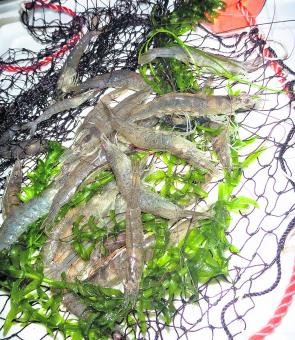
School prawns are in great numbers throughout the Hawkesbury. Catching your own live ones will get you into some great fish.
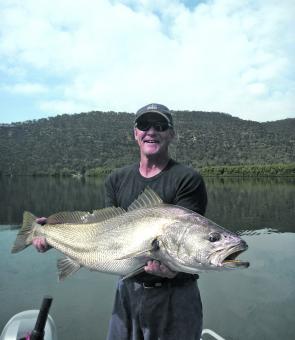
A live herring was the undoing of this impressive mulloway.
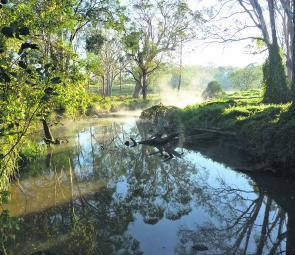
There are some stunning little bass creeks that flow into the main river.

There are multiple access points in the upper freshwater reaches to enjoy land-based fishing for carp and mullet.

River mullet are common captures in the warmer months. Use bread suspended under a float.

Bass inhabit the headwaters of most creeks that adjoin the Hawkesbury. Small spinnerbaits and surface lures are all that’s required to get stuck into a few.

The Hawkesbury is famous for its big blue-nosed bream, which can be encountered along the rock walls, oyster leases, reefs or, like this specimen, on the tidal flats.
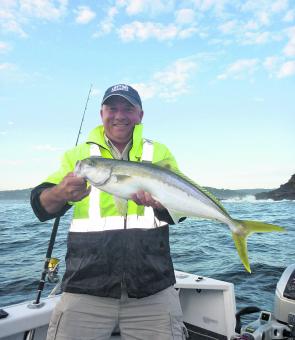
Kingfish are a reliable proposition in the Summer months when trolling the headlands.

The Nepean Gorge is a spectacular piece of water that houses some cracking bass, like this one from Bents Basin.
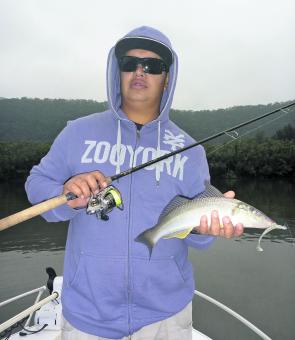
Whiting aren’t that common in the main river but the ones that do take a bait or lure are usually of ‘elbow-slapping’ size.

Some big mulloway call the Hawkesbury home. Fish the tide changes with bait or lures for your chance to do battle with a silver submarine.
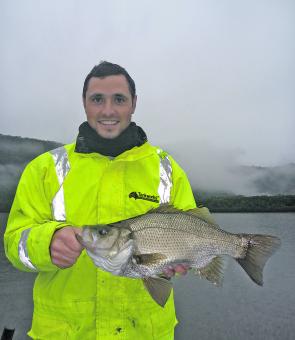
The Hawkesbury is home to some trophy estuary perch, like this 48cm specimen. They’re release-only from June 1 to September 1.

Carp are regarded as pests but can offer some great sport on light tackle. They range from the tidal water at Wisemans Ferry all the way to the headwaters.

Hairtail are regular visitors to Cowan and Broken Bay in the Winter. Fishing at night is the most successful approach.




